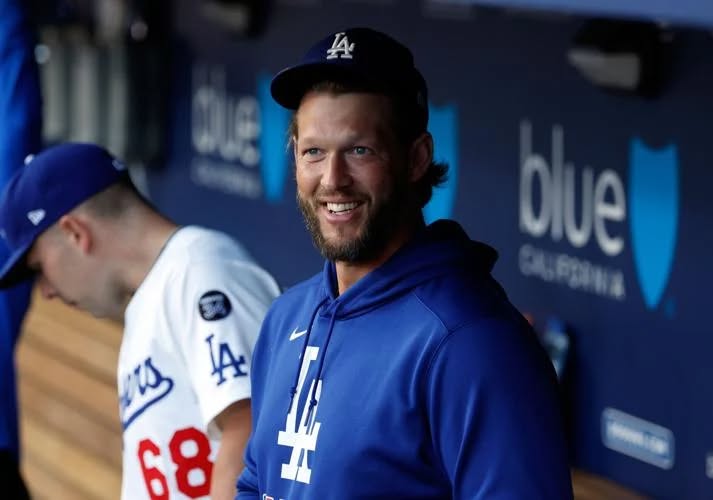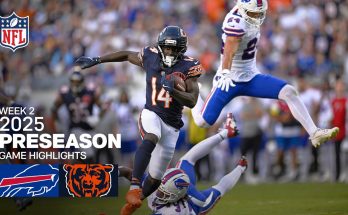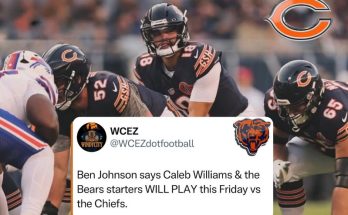On a crisp summer evening under the Los Angeles lights, Clayton Kershaw did what only 19 pitchers had done before him in Major League Baseball’s rich, storied history—he notched his 3,000th career strikeout. In doing so, Kershaw didn’t just add another achievement to an already Hall of Fame-worthy career; he etched his name into one of the most exclusive clubs in professional sports.
As Vinny Capra of the Colorado Rockies swung through a signature Kershaw curveball in the fourth inning, the 36-year-old southpaw joined the ranks of legends—Nolan Ryan, Randy Johnson, Pedro Martínez, and a handful of others—each with a legacy defined by dominance, precision, and staying power. The moment wasn’t just a statistical milestone; it was a celebration of perseverance, craft, and greatness spanning nearly two decades in Dodger blue.
The Road to 3,000
Clayton Kershaw’s path to 3,000 strikeouts wasn’t a sprint—it was a marathon filled with brilliance, setbacks, and relentless dedication. Drafted seventh overall by the Dodgers in 2006 out of Highland Park High School in Dallas, Texas, Kershaw made his MLB debut in 2008 at just 20 years old. Almost immediately, his electric fastball, wicked curve, and unmatched poise signaled the arrival of a generational talent.
He recorded 100 strikeouts in his rookie season, steadily ramping up each year. By 2011, he had become the undisputed ace of the Dodgers’ rotation, winning his first National League Cy Young Award while leading the league in strikeouts (248), ERA (2.28), and wins (21).
From 2011 through 2017, Kershaw averaged over 215 strikeouts per season. His command of the strike zone, combined with deceptive off-speed pitches and elite pitch sequencing, kept batters consistently off-balance. Though back injuries and arm fatigue began to creep in during the latter half of his career, he remained a force on the mound, evolving from a flamethrower into a savvy technician.
Entering the 2025 season, he stood just 47 strikeouts shy of 3,000. When he finally crossed that threshold, it wasn’t just about the number—it was about the excellence sustained over 17 seasons.
A Club of Legends
With his 3,000th strikeout, Kershaw became just the 20th pitcher in Major League Baseball history to reach the milestone. The list reads like a Hall of Fame who’s who:
- Nolan Ryan – 5,714
- Randy Johnson – 4,875
- Roger Clemens – 4,672
- Steve Carlton – 4,136
- Bert Blyleven – 3,701
- Tom Seaver – 3,640
- Don Sutton – 3,574
- Gaylord Perry – 3,534
- Walter Johnson – 3,509
- Greg Maddux – 3,371
- Phil Niekro – 3,342
- Fergie Jenkins – 3,192
- Pedro Martínez – 3,154
- Bob Gibson – 3,117
- Curt Schilling – 3,116
- John Smoltz – 3,084
- Justin Verlander – 3,348 (active)
- Max Scherzer – 3,367 (active)
- Zack Greinke – 3,287 (retired 2024)
- Clayton Kershaw – 3,000*
(*Updated to include Kershaw)
It’s a milestone that reflects more than just skill—it reflects health, durability, and a refusal to relent even as the sport evolved. That Kershaw did it while spending his entire career with one team only adds to the magnitude of the achievement.
The Reaction: A Moment for the Ages
As Capra swung and missed, the Dodger Stadium crowd erupted. Teammates raced from the dugout to embrace Kershaw on the mound. His family, including wife Ellen and their four children, were in the front row, tears glistening under the stadium lights. Even the opposing Rockies applauded respectfully. It wasn’t just the Dodger faithful celebrating; it was baseball fans everywhere acknowledging a living legend.
The scoreboard lit up with a glowing “3,000 STRIKEOUTS” graphic, while video tributes from former teammates, fellow pitchers, and Hall of Famers rolled during the break. Sandy Koufax, who remains the greatest pitcher in Dodger history by many accounts, appeared on the jumbotron to say, “Clayton, you’ve carried the torch with grace, fire, and class. You’re a true Dodger, and tonight, you made history.”
Kershaw, never one to grandstand, simply tipped his cap and returned to the mound, business as usual. But in that moment, fans knew they were watching one of the game’s defining careers reach another monumental peak.
Statistical Greatness
Clayton Kershaw’s place among the all-time greats isn’t limited to strikeouts. Consider the following accolades and metrics:
- 3x Cy Young Award Winner (2011, 2013, 2014)
- 2014 NL MVP — One of the few pitchers to win MVP in the modern era
- 10x All-Star
- 3x NL ERA Champion
- Career ERA: 2.48 (as of July 2025)
- Career WHIP: 1.00
- Over 210 career wins
These numbers put Kershaw in rarefied air—not just as a dominant lefty but as a transcendent pitcher whose career stands alongside Sandy Koufax, Tom Seaver, and Randy Johnson in terms of impact and brilliance.
A Career of Transformation
Perhaps most remarkable is how Kershaw has evolved. Early in his career, his 96-mph fastball set the tone. By his early 30s, recurring back issues forced adjustments. He leaned more heavily on his curveball—considered by many to be the most devastating breaking pitch of the 21st century—and a deceptive slider that continued to flummox hitters.
His ability to reinvent himself kept him relevant as MLB offenses grew more powerful, launch angles became a buzzword, and hitters got younger and stronger. While others flamed out, Kershaw adapted.
His mental toughness, work ethic, and commitment to perfecting his craft became a model for younger pitchers across the league.
Legacy Beyond the Numbers
What separates Kershaw from many peers is his influence off the field. Known for his charitable endeavors, Kershaw and his wife Ellen founded Kershaw’s Challenge, a foundation that has raised millions for children’s causes across the globe—from building schools in Zambia to funding programs for homeless youth in Los Angeles.
His leadership in the Dodgers’ clubhouse, particularly with younger pitchers, has been critical. Whether mentoring Walker Buehler or Julio Urías, Kershaw has passed down knowledge, grit, and humility.
Even more, he’s become a symbol of loyalty in an era defined by player movement. In an age of free agency and trade deadline upheavals, Kershaw stayed with the Dodgers—through postseason heartbreaks, World Series triumph, and personal adversity.
The Playoff Narrative: A Changed Chapter
For years, Kershaw’s critics pointed to his playoff performances as the lone blemish on his résumé. But that narrative changed dramatically in 2020 when he helped lead the Dodgers to their first World Series title in 32 years. He went 4-1 that postseason with a 2.93 ERA, including two critical wins in the World Series against the Tampa Bay Rays.
He didn’t just silence the doubters—he redefined his legacy. That championship ring now glimmers alongside 3,000 strikeouts as evidence of a career complete in every sense.
The Twilight and the Future
Now in his 17th season, Kershaw has hinted that retirement is near but not yet. The lefty has made no formal announcement, but fans sense the final chapters are being written.
“I still love competing,” he said after the game. “My arm doesn’t feel like it’s 25, but I can still get guys out—and as long as I can do that, I’ll keep going.”
Whether he retires this year or next, his induction into Cooperstown is a foregone conclusion. Five years after he hangs up the cleats, expect a packed crowd at the Baseball Hall of Fame in Cooperstown, New York, with a sea of blue caps celebrating the enshrinement of a Dodgers legend.
Final Thoughts: A Baseball Treasure
Clayton Kershaw’s 3,000th strikeout is more than a personal milestone—it’s a celebration for baseball itself. In a game where few players spend their entire careers with one team, where endurance is rare, and where greatness is often fleeting, Kershaw has been a constant.
He’s the heartbeat of the Dodgers, the consummate professional, and now, a 3,000-strikeout pitcher. Every kid who’s ever dreamed of toeing the rubber, of striking out the side, of hearing the roar of the crowd—Clayton Kershaw has lived that dream for nearly two decades.
And as he walked off the mound on that historic night, 3,000 strikeouts in his rearview mirror, it was clear to everyone watching:



